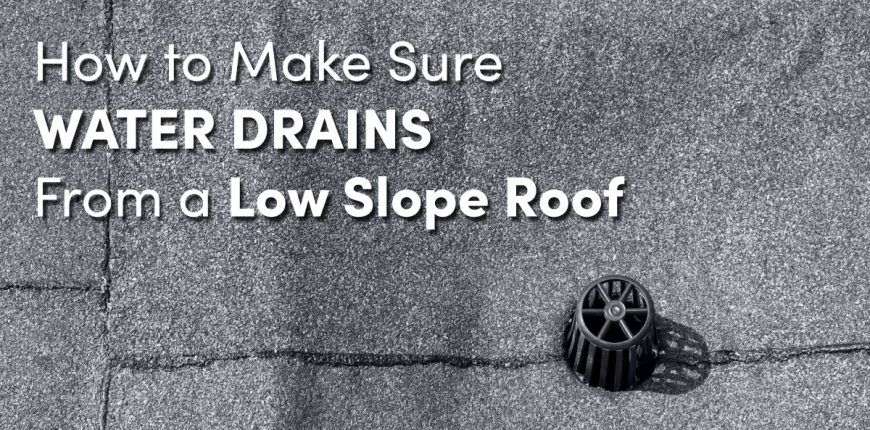
Low slope roofs on commercial buildings have multiple advantages including cost savings over time. But in order to cut costs on maintenance, it’s important to get your roof inspected by an expert every spring and fall. It’s also crucial that water drains within a few days so ponding doesn’t occur. Here are important points for why water should drain properly on a low slope roof.
Why Ponding Must Be Prevented
Too much water buildup on a low slope roof can lead to several problems that affect the durability of your roof. The weight of this water can cause the deformation of the deck. Ice dams can cause damage to the roof membrane and too much moisture can attract algae and mold. When dirt and debris are mixed in it creates an unhealthy situation for the roof including clogged drains.
Drains and gutters must be positioned in proper locations to optimize low slope roofing systems, which should include tapered insulation. Another reason to hire a roofing specialist is to make sure your roof was installed properly.
Common Reasons for Ineffective Drainage
- the inadequate or incorrect thickness of insulation
- improper wood size in relation to insulation
- insulation should be higher than the wood blocking
- drains are not placed at low points on roofing
- plumbing problems below the deck
- gutters get clogged with tree branches, leaves and other materials
Most commercial buildings are designed with internal drains, as building codes require a primary drain and a secondary drain. A roofing specialist will tell you if the drains have been installed in effective places or if they should be moved. Having a backup system such as overflow drains and scuppers is part of the solution to reducing water buildup.
The advantage of internal drains over gutters is they don’t freeze in the winter, as the drainage system is protected by the building structure. Internal drains can be customized for the climate and help block debris. The size of the roof will determine the appropriate number of drains to be effective. The best way to approach water management issues for a low slope commercial roof is to hire a roofing specialist to make periodic inspections. Reach out to us at J. Carnes and Son Roofing for more information on water drainage issues affecting your roof. Our family business has been in operation for over 30 years and our crew emphasizes quality over quantity.




